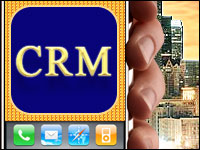
Bring Your Own Device, or BYOD, is an established trend at many U.S. enterprises, and it’s likely to continue to grow.
Mobile marketing is an established channel through which many U.S. companies reach customers and prospective customers — and it also is expected to grow.
Is 2014 the year the twain will meet? Will marketers, especially in the B2B space, start to take advantage of the fact that consumers are using their devices for both work and play and target their ads accordingly, based on time of day or device location, or both?
Writing on the Wall
There is a certain logic to that theory. There are countless apps that allow employees to control or access work-related information from their devices — personally owned or otherwise.
For example, Microsoft last year launched Office Remote, an app that “turns your phone into a smart remote that interacts with Microsoft Office on your PC.” In short, the app lets users control Word, Excel and PowerPoint from across a room, letting them move around freely during presentations.
Consider figures provided by Yesmail Interactive a few months ago. After analyzing 5 billion marketing emails, it found that 16 percent of sales generated from emails came about via a click on a mobile email. Of those mobile purchases, 56 percent took place on a tablet and the remainder were transacted on a smartphone. In the tablet category, iPads account for more than 99 percent of sales.
Although Yesmail didn’t break down its figures between B2C and B2B sales, this trend surely will move into B2B sales if it hasn’t already.
Hurdles to Clear
There are factors pushing against this scenario, however.
BYOD has a strong possibility of failing if an enterprise places too many controls or rules on these devices, a new Gartner report suggests.
Also, if B2B marketers want to zoom in on mobile buyers, they must clean up their own act and correct certain behaviors that could stymie their efforts.
Track the Person, Not the Device
Companies need to learn to track and target their customers in a more holistic fashion, said Nate Barad, director of product strategy at Sitecore.
“Systems have traditionally tracked their content by connecting to the device or IP, and now we can see how valuable it is to connect to the individual,” he told CRM Buyer.
“The combination of business interactions and personal interactions increases the need to identify the individual customer and the context in which they are interacting with your brand,” Barad noted.”The key will be utilizing what we’ve learned to identify their intent and deliver the right content at the right time.”
High-Pressure Environment
Another shift marketers will have to make is to become more aware and more sensitive about the consumer-employee’s work environment and state of mind when targeting ads. It is fair to assume that employees with purchasing power are operating in a high-pressure environment, said Sameer Shah, manager of search engine marketing media at Geometry Global.
“In most situations, people will tend to spend less time engaging with ads and websites on their mobile devices when at work,” he told CRM Buyer. “Many people will want to avoid being seen on mobile devices in the workplace by coworkers and managers. Mobile advertisers should therefore present direct and concise ads during workplace hours.”
This means advertisers should create ads that help expedite paths to conversion during work hours, he said.
“A worker may find themselves in an odd situation if a sound-producing mobile ad is active while he or she is surrounded by coworkers,” Shah pointed out. “For those advertisers with larger conversion time frames, they may even benefit from encouraging return visits at later times, hopefully when the employee is not in the workplace.”





















































